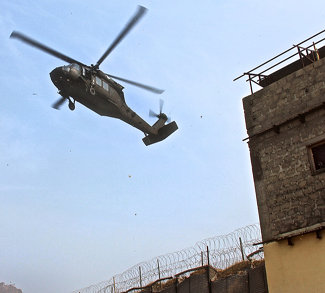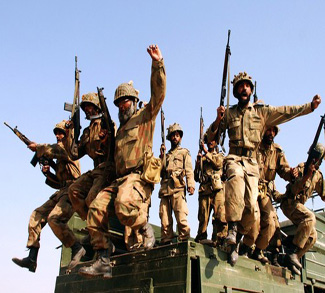Summary
Al Qaeda and the Taliban have carved out Pakistani havens for themselves near the Afghan border and continue to gain political and military strength. Meanwhile, Pakistan’s federal government and military remain disparate and uncoordinated power centers, and neither has a strategy for confronting the growing chaos and violence along the border.
Analysis
Pakistan has a nasty problem: the Taliban and Al Qaeda now have well established redoubts for themselves in the border regions of Baluchistan, the North-West Frontier Province (NWFP), and Waziristan in the Federally Administered Tribal Area (FATA). Recent editorials in Urdu-language dailies harp on the Taliban’s relentless attempts to impose their religious agenda on various regions in the NWFP, and spread it such that even the provincial capital of Peshaware may be in danger of succumbing.
Meanwhile, the Taliban continue to launch attacks across the border on Afghan targets with increasing severity and brazenness. Most remarkable of late were the bombs that rocked the Indian and Pakistani consulates in Kabul: it appears as though the Taliban and their allies feel strong enough to attempt to destabilize the Indian-Pakistani ceasefire as well. Along with the violence, the Taliban have undertaken a savvy propaganda campaign disseminated via DVDs, television interviews, websites, magazines and audiocassettes. They exaggerate their military strength and the weakness of the Afghan and Pakistani governments, and they also portray themselves as fighters on behalf of Islam, of Afghan or Pakistani nationalisms, or some combination thereof.
The Pakistani response to the “Talibanization” of their border areas has taken both military and political forms, but overall it has been a feeble and under-strategized undertaking. Around January of this year, President and then army chief Pervez Musharraf ordered multiple assaults on Taliban positions. These ended up failing as the army’s ill-trained, ill-equipped, and ill-motivated Frontier Corps, which is largely drawn from ethnic Pashtun tribesmen as are the Taliban fighters, sustained heavy casualties and turned the local population against themselves. After that, the political approach was tried: the NWFP provincial government negotiated with Taliban commanders and entered into a non-aggression pact. But the Taliban simply used the new breathing space to organize, spread propaganda, and impose their agenda upon the population.
As these events played out, Pakistan’s federal government was in disarray, owing to the refusal of Musharraf to give up any power, the assassination of Benazir Bhutto, and the ensuing instability as Pakistan’s new Prime Minister, Syed Yousuf Raza Gilani, established control over his party and parliament. Though federal politics in Pakistan has begun to settle down, the PM has not found a way to leverage his authority. To wit: Gilani’s recent attempt to transfer Pakistan’s Interservices Intelligence from the military’s remit to that of the federal ministry of the interior was duly rebuffed by the generals. In other words, Gilani controls neither the military nor the intelligence services, and thus lacks the means to impose a political or military agenda onto Pakistan’s border regions.
The Bush administration is aware of this quandary, but with only a few months left in power, it lacks time and impetus to devise a working strategy for Pakistan. Thus, demands for the Pakistani government to clean up its Taliban problem, voiced this past week by Condoleezza Rice at a press conference in Australia and of President Bush himself after this week’s meeting with Gilani, are more a signal of exasperation than a real threat. The response of both the PM and the military was to reiterate their commitment to fighting the Taliban and Al Qaeda. In other words, there will be no change in the Pakistani snafu just yet.
Ian Speigel is a contributor to Geopoliticalmonitor.com



